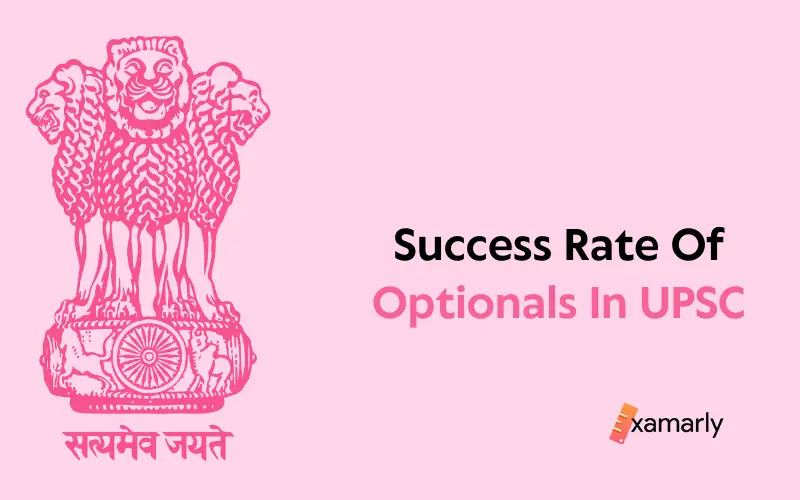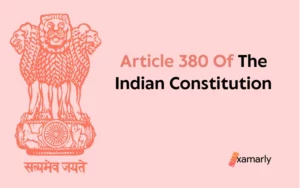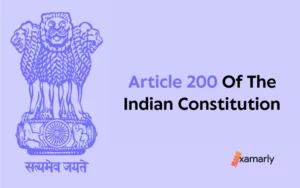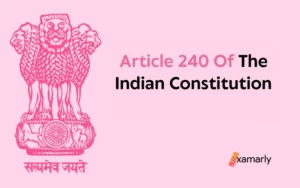Do you also wonder if there is a specific trend with an optional subject? What if there is a trend? What is there is not? We are here to suffice all the curiosity you have related to optional subjects. The data and insights compiled together in this article will help enlighten you on the success rate of optionals in UPSC.
If you want to get the best score in UPSC Mains Exams, it is vital to choose the right optional subject. You have to choose the subject which is both scorer-friendly and beneficial for your overall score increment in the exam process.
How to Choose Optional For UPSC Mains Exams
1. Keep an eye on the previous year Optional success rate percentage. Make an analysis of success rate in different subjects. Look for the success ratio in your preferable subject. Check the consistency of success rate too.
2. Compare both the success rate percentage and the bulk of the optional syllabus.
3. You may consider subjects that closely approach Public administration. Union Public Service Commission is likely to reward a sound knowledge in public administration.
4. Non-literature subjects are bias-free and technical. They ensure a higher prospect of score. however, you have to take it with a pinch of salt that those subjects have very little overlap with essay paper or overall Civil Services/IAS exam. Animal Husbandry & Veterinary Sciences, Commerce & Accountancy, engineering subjects like electrical engineering, civil engineering, mechanical engineering, etc. can be prospective in terms of success.
5. Literature Optional are further categorized into Oria Lit, Persian Lit, Manipuri Lit, Gujarati Lit, Bodo Lit, Pali Lit, etc. There can be a lack of subject matter experts in the not so mainstream languages. But, as a compensation, the syllabus for Literature optional papers is static. If you have a knack for the literary, you can prepare your own practice papers referencing previous year papers.
6. There is no right or wrong subject for candidate. So, don’t shy away from odd subjects. True that major subjects have a lot of subject matter experts in the market. But subject without assistance will also bear fruits when dealt with determined hands and a fierce time table.
7. Many websites and coaching centers recommend 4-5 easiest optional subjects in their curriculum. However, you must understand the difference between success prospect for individuals with different specializations. Contemporary time trends suggest that student recommendations swarm around 4-5 subjects out of the list of subjects in Mains. These subjects are History, Philosophy, Anthropology, Sociology, Political Science & International Relations. These subjects also have maximum overlap with GS papers and interview round of UPSC Civil Services Main Exam, and UPSC Prelims.
8. It may be a good idea to take help from seniors or mentors who have already cleared the examination. But don’t copy their choices blindly; instead, you need to understand their overall rationale and analysis.
Read Also – Most Scoring Optional Subject In UPSC
Supporting Evidence From Previous Year
| Sl. no. | Subject | 2017 (No. of candidates appeared vs. No. of candidates recommended) | 2016 (No. of candidates appeared vs. No. of candidates recommended) | 2015 (No. of candidates appeared vs. No. of candidates recommended) | 2014(No. of candidates appeared vs. No. of candidates recommended) | Success Rate Percentage Range |
| 1 | Assamese Lit | 3/0 | 5/2 | 2/0 | 0-40% | |
| 2 | Arabic Lit. | 1/0 | ||||
| 3 | Bengali Lit. | 3/0 | 5/0 | 6/1 | 0-16.7% | |
| 4 | Bodo Lit. | 1/1 | 100% | |||
| 5 | Gujarati Lit. | 101/8 | 42/7 | 64/8 | 7.9-16.7% | |
| 6 | Dogri Lit. | 1/0 | 1/0 | 0% | ||
| 7 | Punjabi Lit. | 39/6 | 19/5 | 54/6 | 11.1- 26.3% | |
| 8 | Malayalam Lit. | 111/8 | 67/5 | 69/6 | 7.2-8.7% | |
| 9 | Marathi Lit, | 17/0 | 42/7 | 26/1 | 0-16.7% | |
| 10 | Oriya lit. | 5/0 | 4/0 | 10/1 | 10% | |
| 11 | Sanskrit Lit. | 70/5 | 122/10 | 71/4 | 5.6-8.2% | |
| 12 | Sindhi Lit. | 2/1 | 1/0 | 1/0 | 0-50% | |
| 13 | Hindi Lit. | 267/19 | 974/56 | 284/12 | 4.2-7.1% | |
| 14 | Tamil Lit. | 107/5 | 225/29 | 75/8 | 4.7-12.9% | |
| 15 | Urdu Lit. | 26/5 | 29/4 | 28/5 | 13.5-19.2% | |
| 16 | Kannada Lit. | 115/4 | 84/14 | 75/9 | 3.5-16.7% | |
| 17 | Telugu Lit. | 72/1 | 147/9 | 93/4 | 1.4-6.1% | |
| 18 | Manipuri Lit. | 13/1 | 22/1 | 20/1 | 4.5-7.7% | |
| 19 | Maithili lit. | 78/5 | 25/1 | 84/9 | 4-10.7% | |
| 20 | Nepali Lit. | 1/0 | 0% | |||
| 21 | Persian Lit. | 10/0 | 0% | |||
| 22 | Commerce & Accountancy | 224/28 | 188/28 | 200/15 | 7.5-14.9% | |
| 23 | Agriculture | 220/41 | 122/20 | 77/7 | 9.1-18.6% | |
| 24 | Animal Husbandry & Veterinary Sciences | 23/2 | 65/8 | 52/12 | 32/5 | 8.7-23.1% |
| 25 | Anthropology | 880/85 | 345/37 | 579/38 | 449/53 | 6.3-11.8% |
| 26 | Botany | 44/5 | 312/14 | 104/12 | 50/7 | 4.5-14% |
| 27 | Chemistry | 126/11 | 124/7 | 104/11 | 85/6 | 5.6-10.6% |
| 28 | Economics | 233/16 | 326/37 | 269/51 | 188/38 | 6.9-20.2% |
| 29 | Geography | 2669/147 | 4049/236 | 4351/314 | 3158/178 | 5.5-7.2% |
| 30 | Geology | 37/2 | 36/2 | 28/4 | 15/1 | 5.4-14.4% |
| 31 | History | 1074/59 | 3870/212 | 2090/174 | 1303/100 | 5.5-8.3% |
| 32 | Philosophy | 755/53 | 2092/84 | 1116/99 | 736/58 | 4-8.9% |
| 33 | Physics | 140/14 | 239/16 | 266/17 | 147/13 | 6.4-10% |
| 34 | Medical sciences | 313/32 | 235/55 | 293/48 | 10.2-23.4% | |
| 35 | Mathematics | 441/26 | 277/8 | 325/23 | 329/20 | 2.9-7.1% |
| 36 | Public Administration | 1165/119 | 3301/337 | 7077/359 | 2840/176 | 5.1-10.5% |
| 37 | Management | 86/7 | 13/1 | 167/24 | 167/23 | 7.7-14.4% |
| 38 | Psychology | 193/21 | 1061/116 | 1163/92 | 348/34 | 7.9-10.9% |
| 39 | Political Science and International Relations | 1246/117 | 1320/85 | 1107/121 | 651/40 | 6.1-10.9% |
| 40 | Law | 304/43 | 365/19 | 246/42 | 144/35 | 5.2-24.3% |
| 41 | Zoology | 5/1 | 484/18 | 228/29 | 92/9 | 1.8-12.7% |
| 42 | Sociology | 1421/137 | 1555/89 | 2490/230 | 1647/150 | 5.7-9.6% |
| 43 | Civil Engineering | 124/11 | 35/1 | 47/5 | 54/7 | 3.5-13% |
| 44 | Mechanical Engineering | 170/19 | 96/5 | 64/3 | 60/4 | 4.7-11.2% |
| 45 | Electrical Engineering | 193/19 | 74/4 | 126/8 | 113/13 | 5.4-11.5% |
| 46 | Statistics | 3/0 | 14/0 | 16/1 | 6/1 | 6.3-16.7% |
| 47 | English Lit. | 21/2 | 40/6 | 30/5 | 9.5-16.7% | |
| 48 | Pali Lit. | 255/18 | 7.1% | |||
| 49 | Konkani Lit. | 1/0 | 0% | |||
| 50 | Santhali Lit. | 1/1 | 100% |
Conclusion
A successful optional subject can help you displace at least 80 percent of your peers. But, it is important to note that this success rate applies only to subjects that are taken by a large number of candidates. Taking an optional subject that is not very popular can also help you clear the exam.
If you think you’d like to go in for a theoretical subject, then statistics, history, or Political Science & International Relations would be a great choice. However, it is important to note that UPSC exams are tough, and you should be mindful when selecting an optional. Hopefully, the above advice will help you select the best optional subjects for the UPSC exam.






